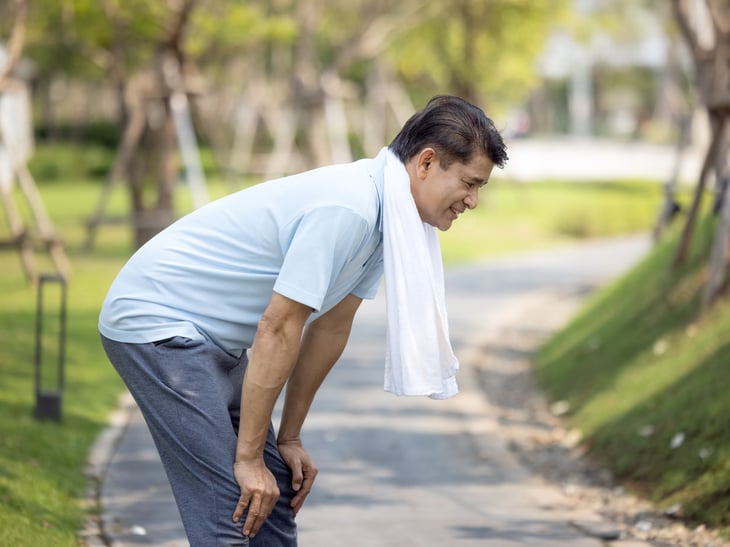
What is exercise-related sudden cardiac death (SCD)? It refers to instances where the heart stops beating resulting in death, occurring during or up to 24 hours following participation in physical activity.
The incidence varies widely based on the population, type of sport and geographical location. In competitive athletes, sudden cardiac death may occur in around 1 in 50,000 individuals. Comparatively, estimates in Singapore from 2005 to 2015 were 4 per 100,000 sudden cardiac deaths related to any sporting activity in all age-groups.
Exercise-related sudden cardiac death can occur when the electrical circuitry of the heart is malfunctioning, such as in long QT syndrome and Brugada syndrome (both inherited conditions that may result in life threatening abnormal heart rhythms), or when the pumping ability of the heart is weakened, such as infection (myocarditis), hyper or hypothermia, as well as toxicity (from illicit drugs).
In individuals below 35 years old, SCD can be caused by a number of factors. These include conditions where certain structures within the heart are abnormal, such as:
- hypertrophic cardiomyopathy (a condition where the muscle fibres of the heart grow and multiply in an abnormal fashion),
- arrhythmogenic cardiomyopathy (a condition where the muscular portion of the heart is replaced by abnormal tissue, affecting the heart rhythm and function) and
- coronary artery anomalies (blood vessels that do not originate from their expected location).
In individuals above 35 years old, the most common cause of SCD is coronary artery disease, which is the narrowing of the blood vessels that supply the heart muscle due to accumulation of cholesterol plaques. Over time, this narrowing leads to reduced blood circulation to the heart muscle and may result in a lethal heart attack.
To prevent SCD, various sporting bodies worldwide recommend some form of pre-participation screening before engaging in sporting activity. This may include a questionnaire on related symptoms (such as fainting or chest pain) during physical activity and whether there is a family history of sudden cardiac death.
Depending on the type and level of activity, an electrocardiogram (ECG) may also be performed to screen for electrical signals suggestive of heart conditions mentioned above.
While screening isn’t foolproof, it has curbed the rates in sudden cardiac death, as proven by Italy’s systematic screening of competitive athletes. However, it is not possible to predict how one’s body will respond to the combination of potential stressors including physical strain, environmental (heat) stress and electrolyte/fluid imbalances.
To minimise the tragic occurrences of SCD, here are some helpful tips:
- Avoid physical activity when unwell, especially when you have a fever
- Replenish your fluids and electrolytes regularly, especially when the activity is prolonged
- For non-competitive athletes, race at your training pace and resist the temptation to “go all out” close to the end point
- Listen to your body and slow down or stop if you do not feel “right”
- Complete the "Get Active" questionnaire prior to engaging in a new activity or competitive sport
References:
Harmon KG, et al. Heart 2014;100:1227–1234
Oh et al. Ann Acad Med Singap 2019 May;48(5):156-160.
Chandra et al. J Am Coll Cardiol 2013;61:1027–40
La Gerche et al. J Am Coll Cardiol Img 2013;6:993–1007
Mont et al. Eur J Prev Cardiol. 2017 Jan;24(1):41-69
Corrado et al. JAMA 2006 Oct 4;296(13):1593-601
Article contributed by:
Dr Yeo Tee Joo
MBBS, MRCP (UK), MMED (int Med), MCI (Singapore)
Consultant Cardiologist
Director, Cardiac Rehabilitation Unit
National University Heart Centre Singapore
Edited by:
Associate Professor Jason Lee Kai Wei
PhD, FACSM
Human Potential Translational Research Programme
Yong Loo Lin School of Medicine
National University of Singapore





![ActiveSG Academies and Clubs Logo (Solid Colour)[8647]](https://www.activesgcircle.gov.sg/hs-fs/hubfs/ActiveSG%20Circle%202023Theme/images/ActiveSG%20Academies%20and%20Clubs%20Logo%20(Solid%20Colour)%5B8647%5D.png?width=150&height=65&name=ActiveSG%20Academies%20and%20Clubs%20Logo%20(Solid%20Colour)%5B8647%5D.png)



-01.png?width=200&height=141&name=Team%20Singapore%20Logo%20(Red)-01.png)












.png?width=250&height=250&name=CCE%2024%20April%20Coaching%20as%20a%20way%20of%20Life%20From%20(400%20x%20400%20px).png)



